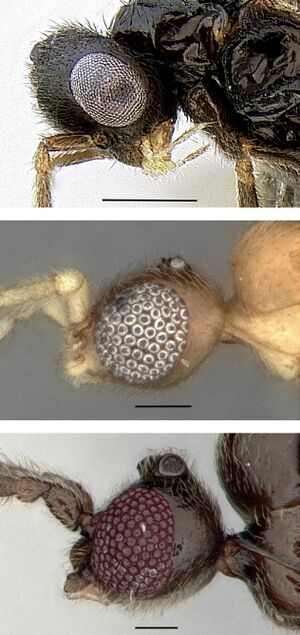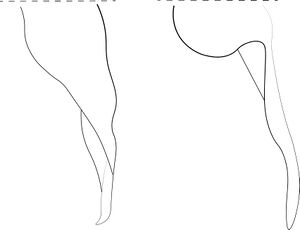Leptanilla indica
| Leptanilla indica | |
|---|---|

| |
| Scientific classification | |
| Kingdom: | Animalia |
| Phylum: | Arthropoda |
| Class: | Insecta |
| Order: | Hymenoptera |
| Family: | Formicidae |
| Subfamily: | Leptanillinae |
| Tribe: | Leptanillini |
| Genus: | Leptanilla |
| Species: | L. indica |
| Binomial name | |
| Leptanilla indica (Kugler, J., 1987) | |
Known from the type males, the labels of these specimens state they were found in the Calicut Univ. area in Kerala, India in 1979. Nothing else is know about these samples.
Identification
Keys including this Species
Distribution
Distribution based on Regional Taxon Lists
Oriental Region: India (type locality).
Distribution based on AntMaps
Distribution based on AntWeb specimens
Check data from AntWeb
Countries Occupied
| Number of countries occupied by this species based on AntWiki Regional Taxon Lists. In general, fewer countries occupied indicates a narrower range, while more countries indicates a more widespread species. |

|
Estimated Abundance
| Relative abundance based on number of AntMaps records per species (this species within the purple bar). Fewer records (to the left) indicates a less abundant/encountered species while more records (to the right) indicates more abundant/encountered species. |

|
Biology
Castes
Images from AntWeb

| |
| Male (alate). Specimen code casent0102374. Photographer April Nobile, uploaded by California Academy of Sciences. | Owned by NHMUK, London, UK. |
Nomenclature
The following information is derived from Barry Bolton's Online Catalogue of the Ants of the World.
- indica. Yavnella indica Kugler, J. 1987: 55, figs. 19-22 (m.) INDIA.
- Combination in Leptanilla: Griebenow, 2024: 128.
Unless otherwise noted the text for the remainder of this section is reported from the publication that includes the original description.
Description
The 5 males are of the same size or a little smaller than the small specimens of Leptanilla argamani (1.6-1.7 mm). They are similar to Leptanilla argamani in color, wing venation, the form of the propodeum and the petiole and in the general form of the genitalia. In both species the head width, inclusive of the eyes, is larger than the head length. The main differences between the two species are as follows:
| L. argamani | L. indica |
|---|---|
| 1. Frons vertical | 1. Frons oblique |
| 2. Ocelli located on a very large bulge | 2. Ocelli located on a small bulge |
| 3. All funicular segments except the 1st segment are at least 3 times as long as wide | 3. Funicular segments shorter, the penultimate segment is twice as long as wide |
| 4. Fore femur straight, not thicker than mid and hind femora | 4. Fore femur slightly curved at the base, thicker in the middle than the mid and hind femora |
| 5. Gonoforceps in lateral view leaflike, regularly narrowing towards the tip | 5. Gonoforceps in lateral view narrow, band like |
| 6. Volsellar digitus with a long, fingerlike, ventral projection | 6. Volsellar digitus without a fingerlike projection |
| 7. The united shield-like gonapophyses shorter than the gaster | 7. The shield-like gonapophyses longer than the gaster |
Type Material
- Holotype male India, Calicut, Kerala, 8.IX.1979 (Boucek).
- Paratypes 4 males, same collecting data.
The holotype and 2 paratypes are preserved in the The Natural History Museum, 2 paratypes in the TAU.
References
- Griebenow, Z. 2020. Delimitation of tribes in the subfamily Leptanillinae (Hymenoptera: Formicidae), with a description of the male of Protanilla lini Terayama, 2009. Myrmecological News 30: 229-250. (doi:10.25849/MYRMECOL.NEWS_030:229).
- Griebenow, Z. 2024. Systematic revision of the ant subfamily Leptanillinae (Hymenoptera, Formicidae). ZooKeys 1189, 83–184 (doi:10.3897/zookeys.1189.107506).
- Kugler, J. 1987 [1986]. The Leptanillinae (Hymenoptera: Formicidae) of Israel and a description of a new species from India. Isr. J. Entomol. 20: 45-57 (page 55, figs. 19-22 male described)






